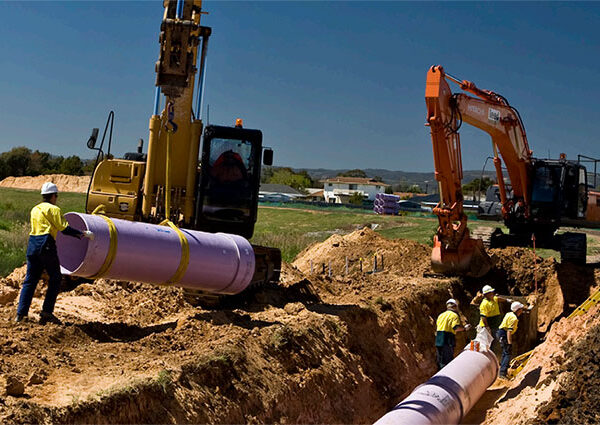Glenelg to Adelaide Pipeline (GAP)
Contact
Insight:
The Glenelg to Adelaide pipeline delivers a reliable climate independent water supply to irrigate open space in western and central Adelaide. Retrofitting a centralised, fit-for-purpose water supply system dedicated to maintaining green, open spaces consolidates Adelaide as a leader in urban water management.
The drivers
Adelaide needed to harness alterative water supplies to ensure open spaces are resilient to the effects of drought
- Secure an alternative water supply for irrigation The GAP offers councils and other land managers a secure, fit-for-purpose water supply that is predictable, consistent and most importantly buffered from the effects of drought and exempt from water restrictions. Adelaide has traditionally relied on reservoirs in the Mount Lofty Ranges and the River Murray for mains-supplied water. Between 1996 and 2010, the City of Adelaide, which manages the Adelaide Parklands, reduced water use from 750 ML each year to 350 ML, the result of water restrictions during the Millennium Drought. Historically, the Adelaide Parklands used a mix of mains-supplied potable water and groundwater, but the ongoing use of groundwater was limited because of high salinity levels. The city needed an alternative water supply.
- Reduce reliance on the River Murray The Millennium Drought not only highlighted South Australia’s reliance on the River Murray as a source of water supply, but also demonstrated the reliance on high-quality potable water for irrigation. Potable water restrictions significantly affected the quality of Adelaide’s open spaces, reducing their amenity and ecological value.
- Deliver broader environmental gains Treated wastewater is discharged into Gulf St Vincent. The Gulf is bounded to the north, east and west by land, creating a well-protected, low energy marine environment. Water movement in Gulf St Vincent is minimal and the discharge of nutrient rich wastewater has affected seagrass meadows. SA Water, the South Australian water utility, was encouraged to identify new reuse opportunities for wastewater and help reduce the amount returned to the marine environment.
- Meet community expectations Water restrictions and reduced irrigation caused large vegetation die-off in the public and private realms, stimulating a loss of open space amenity and community concern. The community demonstrated the value they placed on green open spaces and voiced their feedback.
Project stats
Location
Adelaide, South Australia
Dates
August 2020
Participants
Topics
Contact
The outcomes
Creating a cool, green city by redirecting high-quality wastewater from the marine to the terrestrial environment.
 Cities providing ecosystem services
Cities providing ecosystem services

-
Reducing reliance on the River Murray The Murray–Darling River system has many demands placed upon it. Reducing mains supplied water sourced from the River Murray keeps water in the river system, providing downstream environmental benefits.
-
Providing healthier marine ecosystem The GAP removes megalitres of treated wastewater from the marine environment, by redirecting water that would have been discharged in Gulf St Vincent to open spaces in western and central Adelaide.
-
Ensuring a high quality, non-potable water source Treated wastewater from the GAP includes minerals and nutrients that aid plant growth, health and vigour.
 Cities as water supply catchments
Cities as water supply catchments

- Delivering a secure, climate-independent water supply Water from household toilets, sinks and drains is captured, treated and redistributed for irrigation. This process provides a secure supply of fit-forpurpose water that is exempt from water restrictions, regardless of the effects of drought or dry times.
- Closing the loop Adelaide’s public open spaces are maintained to a high standard using water sourced and treated within the city itself.
 Cities comprising water sensitive communities
Cities comprising water sensitive communities

-
Improving amenity Public open spaces are improved via access to an alternative, reliable water supply.
-
Buffering the urban heat island (UHI) effect Thermal aerial imagery demonstrates the cooling effect of the irrigated vegetation in the Adelaide Parklands compared with non-irrigated vegetation and hard surfaces in the Adelaide CBD: irrigated vegetation surface temperatures can be up to 25°C cooler than hard surfaces in the CBD. A low cost alternative water supply keeps vegetation green and cushions the city from the UHI effect.
-
Delivering social and economic benefits The parklands are a highly-valued space. Every year, they host events such as the Adelaide Fringe, the Adelaide Festival, WOMADelaide and the Superloop Adelaide 500. Access to a reliable water source maintains the parklands as an attractive and relevant venue space, and enables them to recover quickly following large festivals and public events.
Interested in this solution?
We partner with small and large companies, government and industry in Australia and around the world.

Comments